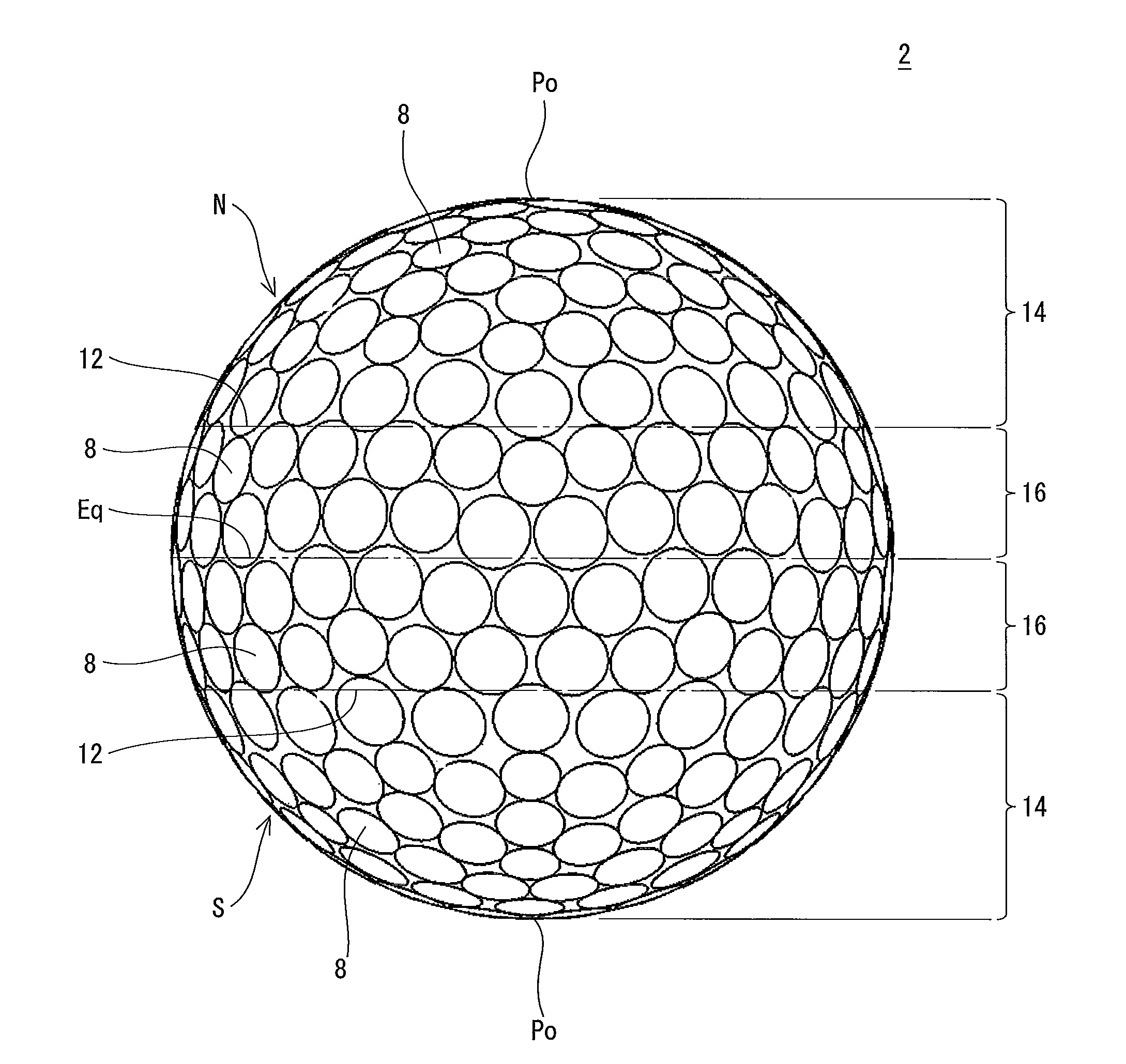Golf ball
a golf ball and dimple technology, applied in the field of golf balls, can solve problems such as disturbance of air flow
- Summary
- Abstract
- Description
- Claims
- Application Information
AI Technical Summary
Benefits of technology
Problems solved by technology
Method used
Image
Examples
example 1
[0125]A rubber composition was obtained by kneading 100 parts by weight of a polybutadiene (trade name “BR-730”, available from JSR Corporation), 30 parts by weight of zinc diacrylate, 6 parts by weight of zinc oxide, 10 parts by weight of barium sulfate, 0.5 parts by weight of diphenyl disulfide, and 0.5 parts by weight of dicumyl peroxide. This rubber composition was placed into a mold including upper and lower mold halves each having a hemispherical cavity, and heated at 170° C. for 18 minutes to obtain a core with a diameter of 39.7 mm. On the other hand, a resin composition was obtained by kneading 50 parts by weight of an ionomer resin (trade name “Himilan 1605”, available from Du Pont-MITSUI POLYCHEMICALS Co., LTD.), 50 parts by weight of another ionomer resin (trade name “Himilan 1706”, available from Du Pont-MITSUI POLYCHEMICALS Co., LTD.), and 3 parts by weight of titanium dioxide. The above core was placed into a final mold having numerous pimples on its inside face, foll...
example 2
[0126]A golf ball of Example 2 was obtained in a similar manner as Example 1, except the final mold was changed. This golf ball has a dimple pattern shown in FIGS. 15 and 16. In this dimple pattern, each equator vicinity region has six units, and each pole vicinity region has three units. The latitude of each boundary line is 23°. The detailed specifications of the dimples are shown in the following Table 1. The peak values and the orders are shown in the following Table 3.
example 3
[0127]A golf ball of Example 3 was obtained in a similar manner as Example 1, except the final mold was changed. This golf ball has the dimple pattern shown in FIGS. 2 and 3. In this dimple pattern, each equator vicinity region has six units, and each pole vicinity region has three units. The latitude of each boundary line is 23°. The detailed specifications of the dimples are shown in the following Table 1. The peak values and the orders are shown in the following Table 3.
PUM
 Login to View More
Login to View More Abstract
Description
Claims
Application Information
 Login to View More
Login to View More - R&D Engineer
- R&D Manager
- IP Professional
- Industry Leading Data Capabilities
- Powerful AI technology
- Patent DNA Extraction
Browse by: Latest US Patents, China's latest patents, Technical Efficacy Thesaurus, Application Domain, Technology Topic, Popular Technical Reports.
© 2024 PatSnap. All rights reserved.Legal|Privacy policy|Modern Slavery Act Transparency Statement|Sitemap|About US| Contact US: help@patsnap.com










